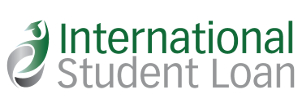
Working on an F1 Visa
If you hold an F-1 visa, as most international students in the US do, you are allowed to work, but there are strict guidelines to which you must adhere.
There are five types of employment which you might find while studying in the US: on-campus employment is the most common, then four sub-categories of off-campus employment: optional practical training (OPT), curricular practical training (CPT), severe economic hardship, and approved international organizations.
On-Campus Employment
This is the most common type of employment found by international students in the US. It does not require approval from the United States Citizenship and Immigration Services (USCIS). However, you might find that on-campus employment is limited, and that they will not provide much income. You might be required to obtain permission from your school's International Student Office before accepting on-campus employment, and they may not permit you to work during your first semester or year.
In order to work on-campus, you must adhere to several rules and regulations. You have to maintain valid F-1 status; you may not displace (take a job away from) a US student; you may work up to 20 hours a week (part-time), or full-time during holidays and vacation periods.


Optional Practical Training (OPT)
As an international student in the US, you are allowed to work off-campus in optional practical training status before and after completing your degree. In order to gain OPT employment, you will have to obtain permission from USCIS and your school's International Student Office.
You do not need to have a job offer in order to apply for OPT, and you can apply after being enrolled in a US school for at least 9 months, but you cannot begin employment until after you have received your Employment Authorization Document (EAD) and you have been enrolled for at least a year.
As with on-campus employment, you are subject to several rules under OPT employment. You must maintain valid F-1 status; you must apply before completing your degree; the work must be directly related to your area of study; if you have engaged in full-time Curricular Practical Training (CPT) for 12 months or more, you are not eligible for OPT. OPT is allowed for up to 12 months full-time; part-time OPT employment reduces available full-time employment by half. For example, if you work part-time for 6 months before completing your degree, you may then work full-time for 9 months after completing your degree. You are eligible for 12 months of OPT employment per level of degree achieved. This means that you can do 12 months of OPT employment after receiving your undergraduate degree, go back to school for your graduate degree, and then do 12 more months of OPT employment.
If you are working in OPT employment before completing your degree, you are subject to different rules than post-degree OPT employment. You must be enrolled full-time, and you may only work part-time (up to 20 hours a week). You may, however, work full-time during holidays and vacations. After you've completed all your coursework, you may work full-time if you are working on a thesis or dissertation and are making normal progress towards your degree.
After you complete your degree, OPT employment must be full-time, and it must be completed within 14 months after you complete your degree. You must also apply to USCIS for post-completion OPT before you complete your degree.
In 2008, the Department of Homeland Security adjusted the OPT requirements for students in certain areas of study so that OPT can be extended for an additional 17 months following completion of the student's degree. This extension is only available for students employed by companies who are enrolled in the E-Verify program. In order to qualify, you must be studying one of the following subjects:
- Actuarial Science
- Computer Science Application
- Engineering
- Engineering Technologies
- Life Sciences
- Mathematics
- Military Technologies
- Physical Sciences
Curricular Practical Training (CPT)
CPT is “alternative work/study, internship, cooperative education, or any other type of required internship or practicum that is offered by sponsoring employers through cooperative agreements with the school.” It is allowed for F-1 students when practical training is an essential part of their academic program. The work experience must be a required part of your degree, or academic credit must be awarded, in order for you to qualify for CPT. You must also receive authorization from both USCIS and your school's International Student Office.
As with OPT, the work you do under CPT must be directly related to your field of study. Unlike with OPT, however, you must have received a job offer before you may apply for CPT employment. You must also have been enrolled in school full-time for a year under valid F-1 status.
Once you've received CPT authorization from your International Student Office, you may only work for your specific employer and for the period of time authorized. Your CPT authorization will stipulate whether you may work part-time or full-time; you may only be authorized for part-time CPT employment while you are in school. Unlike with OPT employment, there is no limit to how long you can work under CPT employment. However, if you work on CPT full-time for 12 months or more, you will no longer be eligible for OPT, so be aware of that!
Severe Economic Hardship
If you are an F-1 student suffering what the USCIS defines as “severe economic hardship,” then you are eligible to work off-campus part-time while school is in session, and full-time during holidays and vacations. In order to be eligible, you must be suffering from “severe economic hardship caused by unforeseen circumstances beyond [your] control.” These circumstances include, but are not limited to:
- Medical bills or other large, unanticipated expenses
- Loss of financial aid or on-campus employment through no fault of your own
- Substantial increase in tuition and/or living costs
- Unanticipated changes in the financial condition of the student's support source
- Sizeable fluctuations in the value of currency or exchange rate
In order to be eligible for this type of employment, you must have held valid F-1 status for one academic year and be in good academic standing. You must provide proof of economic hardship caused by circumstances outside your control, and show that on-campus employment is either unavailable or insufficient (in order to do this, you must have made a decent effort to find on-campus employment before applying).
Work with your International Student Office to apply for an employment authorization document (EAD), which is required in order to start work. They will be able to help you with any forms or documents required.
Employment with an International Organization
If you are an international student in the US on an F-1 visa, you may also find employment with a “recognized international organization.” Organizations must be on the official State Department list in order to qualify. Some of the organizations on this list include the Red Cross, African and Asian Development Banks, the World Health Organization, the World Trade Organization, and many more. You are only eligible for this type of employment if you have a job offer and a sponsorship from one of the listed organizations.
In order to work for an international organization, the employment must be in your field of study, you must be in good academic standing, and you must have held valid F-1 status for at least one academic year. You will have to apply for an EAD before you may begin work.
Unlike with CPT, this type of employment does not have to be for-credit nor required for your degree, and it will affect your ability to qualify for OPT employment


F-2 Visa
Spouses or children of students studying in the US on an F-1 visa are eligible to stay in the US on an F-2 visa. However, F-2 dependents are not allowed to work in the US under any circumstances. They may, however, work as unpaid volunteers, and if they change their status to F-1, they become eligible for the employment benefits available to F-1 visa holders.
Get the Financial Aid Newsletter!

